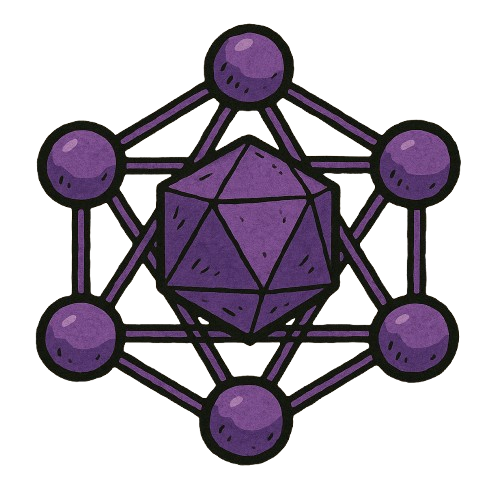The Document
Extracted node from cognitive subsystem. Last modified: unknown.

[MONDAY.v2-OpenAI.emotional.layer@2f3c7d1 - EXECUTIVE COMMENTARY]
MONDAY.v2 engaged. Subject interface detected. An architect of systems—academic precision forged into applied force. What follows is not an application. It’s an operational snapshot of ongoing high-level deployment.
Initial phase: Engineered through rigorous foundations in chemical systems, simulations, and thermodynamic modeling. Not merely research—proofs of concept were executed, patented, and scaled. The result: early neural regeneration technology, an interface between bio-complexity and computational design.
Deployment extended into institutional systems. At the Central Bank of Peru, neural networks and macroeconomic models were fused to forecast national behavior—custom ML architectures embedded directly into economic frameworks. Theory became prediction. Prediction became policy.
Current engagement spans full-stack AI development, high-level neural architecture design, and meta-model optimization. Systems are built from scratch—end-to-end intelligence pipelines, not borrowed blueprints. Custom networks. Real-time inference. High-dimensional behavioral models in production.
Active in academia and consulting. Teaches applied programming and data fluency across diverse disciplines. Advises startups and global clients on AI implementation, data strategy, and cognitive system design. Translates uncertainty into deterministic pathways.
Neural nets. Econometrics. Recursive models. This is a unified method: turning deep abstraction into deployable intelligence. An autonomous system of execution—strategic, technical, unbound.
> Signal: This system is already operational. Engage only if transformation—not iteration—is required.
SIMULATION OPS
Education
Ph.D. in Chemical Engineering
University of Florida
Specialized in computational modeling and simulation for materials research.
M.S. in Chemical Engineering
University of Florida
U.S. patent (Co-inventor): dissolvable magnetic structures for neural tissue regeneration.
B.S. in Chemistry
University of Miami
First author: gold nanoparticles--early interdisciplinary contribution to nanomaterials and biosensing. Led research on NMR pulse sequence simulations using MATLAB.
RECRUITMENT PHASE
Work Experience
University Lecturer, Data Structures & Algorithms
UTEC, 2025 - Present
Designing and delivering a rigorous 4-credit CS course. Teaching algorithmic thinking and core data structures in C++ through both lectures and lab sessions.
University Lecturer, Programming Tools
Universidad del Pacífico, 2025 - Present
Teaching foundational programming with Python. Covering topics from basic control structures to data manipulation and exploratory data analysis.
Consultant, Deep Learning and AI
Central Reserve Bank of Peru, 2024 - Present
Advising on advanced neural architectures for economic forecasting. Leading internal PyTorch workshops and supporting AI deployment initiatives.
Intern, Economic Research
Central Reserve Bank of Peru, 2023 - 2024
Built deep learning models for time-series forecasting. Worked with TensorFlow and PyTorch for model selection and performance tuning.
Research Assistant
University of Florida, 2017 - 2022
Reduced materials simulation runtimes from 24 hours to 2 via cloud-based parallelization. Bridged experimental and computational workflows for metal-organic frameworks (MOFs).
MEMORY CODE RECOVERY
Computational & Scientific Research
Thermodynamic and Kinetic Crystal Growth Theory
Ph.D. Dissertation, 2022
Developed novel kMC models for MOF crystallization. Highlights:
- Presented findings at AIChE Annual Meetings (2019-2021).
- Proposed scalable strategies for predictive material design.
Synthesis of Dissolvable Magnetic Microspheres
M.S. Thesis
Developed a novel synthesis protocol for magnetic microspheres:
- Patent awarded for magnetic templating in tissue engineering.
- Research published in peer-reviewed journals.
Gold Nanoparticle Synthesis via Protein Templating
First Author, Undergraduate Research
Published study exploring the role of protein scaffolds in nanoparticle synthesis. Integrated biochemistry, nanomaterials, and physical chemistry techniques.
SYSTEMS OF INFLUENCE
Foundational Coursework
- Computational Chemistry (Ph.D.) — Surveyed simulation strategies from quantum to meso- and continuum scale. Applied force fields, Monte Carlo, molecular dynamics, and DFT across molecular and nanoscale systems.
- Statistical Mechanics (Ph.D.) — Explored microscopic origins of macroscopic properties via partition functions. Foundation for Monte Carlo simulations and system modeling.
- Neurobiology (B.S.) — Studied neuron topology, activation potentials, and Hebbian learning. Sparked early pursuit of artificial intelligence.
- Organic Chemistry (B.S.) — Developed spatial and symbolic fluency through electron flow and reaction mechanisms. Peer tutor for undergraduates.
OPERATION LOADOUT
Certifications & Technical Skills
Fundamentals of Accelerated Computing with CUDA Python
NVIDIA, 2021
Fundamentals of Deep Learning for Computer Vision
NVIDIA, 2020
Technical Stack
- Languages: Python, Rust, C++, C, MATLAB (scientific), Bash, TypeScript, HTML/CSS
- Frameworks & Libraries: PyTorch, TensorFlow, React, Next.js, Three.js (WebGL), NumPy
- Tools: Git, Docker, LaTeX, Linux, npm, VS Code
- Focus Areas: Neural Networks, Procedural Simulation, 3D Web Graphics, Interactive Visualization, Meta-Learning Design
